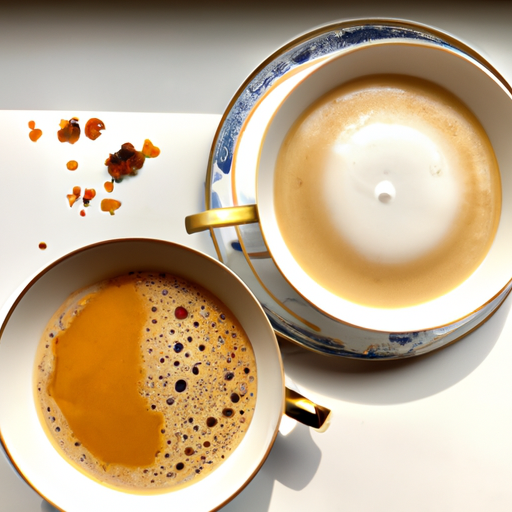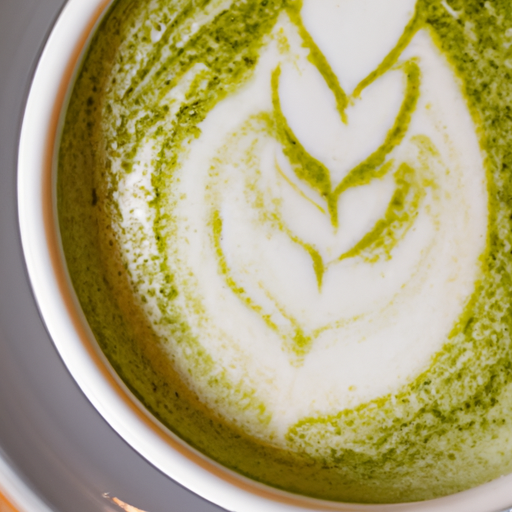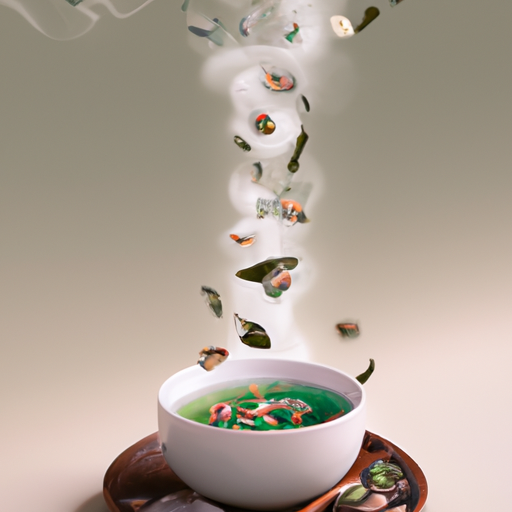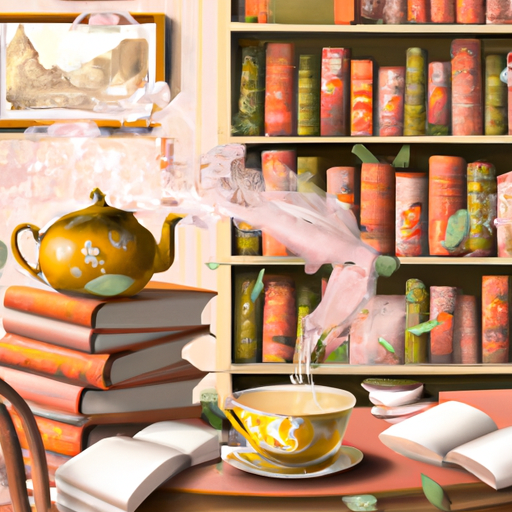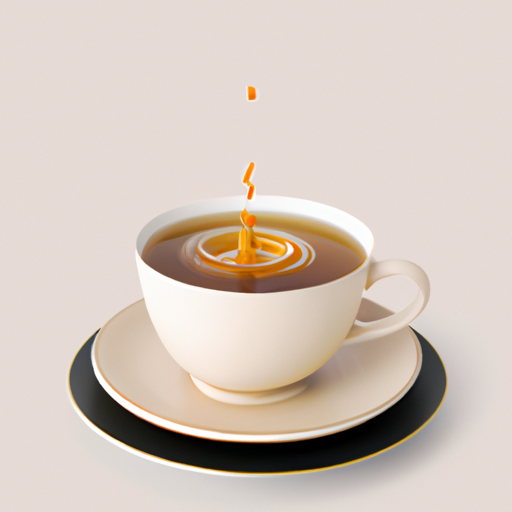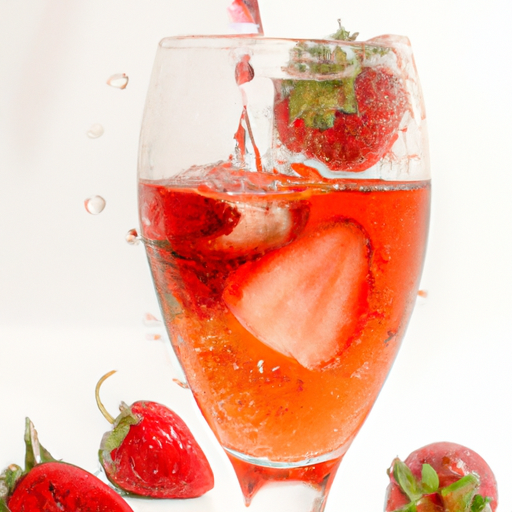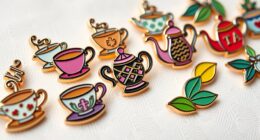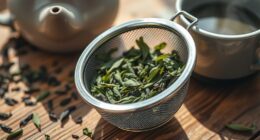Enjoy the rich and creamy goodness of Royal Milk Tea with a comforting cup that will surely delight your taste buds.
As a tea enthusiast, I have always been captivated by the richness and indulgence of milk tea. But there’s something truly special about the Japanese version, known as Royal Milk Tea.
Imagine a velvety smooth concoction, simmering on the stovetop, as the aromatic black Assam tea leaves infuse their robust flavors into whole milk. The result is a heavenly blend that is both comforting and luxurious.
In this guide, I will take you through the wonderful world of homemade milk tea and unravel the secrets of the Japanese version. From the essential ingredients to the precise cooking process, I will provide you with all the knowledge you need to create your own perfect cup of Royal Milk Tea.
Join me as we explore the variations, nutrition information, and the sheer pleasure of sipping on this divine elixir.
Let’s dive into the depths of flavor and discover the true richness of Royal Milk Tea.
Key Takeaways
- Royal Milk Tea is a Japanese version of milk tea that is made with more milk than water and simmered with black Assam tea, whole milk, and white sugar on the stovetop.
- Milk tea comes in various types from different countries, each offering a unique flavor and experience.
- Milk tea has numerous benefits, including providing antioxidants from tea leaves, promoting heart health, and offering calcium and protein for strong bones and muscles.
- Homemade milk tea can be made using different types of tea leaves such as robust Assam tea, delicate Earl Grey, or smooth matcha, and whole milk is important for achieving a creamy texture.
What is it?
I already know that Royal Milk Tea is the Japanese version of milk tea, made with more milk than water and simmered with black Assam tea, whole milk, and white sugar on the stovetop.
But did you know that milk tea comes in various types from different countries? Each type offers a unique flavor and experience. From the creamy and robust Royal Milk Tea to the aromatic and spiced Indian Chai, there’s something for everyone.
Apart from its delightful taste, milk tea also offers health benefits. It contains antioxidants from the tea leaves, which may help boost the immune system and promote heart health. Additionally, the milk in milk tea provides calcium and protein, essential for strong bones and muscles.
So, not only does milk tea satisfy your taste buds, but it also nourishes your body.
Ingredients and Cooking Process
To truly appreciate the artistry of this creamy beverage, one must first delve into the world of ingredients and the intricate cooking process involved. When it’s about making homemade milk tea, there are different types of tea leaves that can be used to create a unique flavor profile. Whether it’s the robust and malty Assam tea, the floral and delicate Earl Grey, or the earthy and smooth matcha, each tea leaf has its own distinct characteristics that can elevate your milk tea experience.
To achieve the perfect creamy texture in your milk tea, it’s important to use whole milk. This’ll give your drink a luscious and velvety mouthfeel that’s unmatched. Additionally, simmering the milk and tea mixture on low heat allows the flavors to meld together, creating a harmonious blend of taste and aroma. Lastly, adding a touch of sweetness with cane sugar or simple syrup adds the perfect balance to the richness of the milk and the boldness of the tea.
So, grab your favorite tea leaves, pour in some whole milk, and embark on a journey to discover the richness of homemade milk tea.
Variations and Nutrition Information
Exploring the different variations of this creamy beverage opens up a world of flavor possibilities. There are so many different types of milk tea recipes from various countries, each with their own unique twist.
From the classic Taiwanese bubble milk tea with tapioca pearls to the fragrant Thai iced milk tea with spices like cardamom and star anise, the options are endless.
One popular variation is the Japanese Royal Milk Tea, known for its rich and velvety texture. But milk tea isn’t just about the taste, it also offers some health benefits.
Milk tea is a great source of calcium, which is essential for strong bones and teeth. It also contains antioxidants from the tea leaves, which can help boost the immune system.
So not only is milk tea delicious, but it can also be a nutritious choice.
Frequently Asked Questions
How does the taste of Royal Milk Tea differ from other types of milk tea?
How does the taste of Royal Milk Tea differ from other types of milk tea? With its rich and creamy texture, the Japanese version stands out. By exploring its origins and unique brewing techniques, we can truly appreciate its distinct flavor.
Can I use different types of tea leaves to make Royal Milk Tea?
Yes, you can use different tea varieties to make Royal Milk Tea. The best tea leaves for milk tea are Assam and Darjeeling, but feel free to experiment with flavors like Earl Grey or Chai for a unique twist.
Are there any alternative sweeteners that can be used in Royal Milk Tea?
There are several alternative sweeteners that can be used in royal milk tea, such as honey, agave syrup, or stevia. Using these sweeteners adds a touch of natural sweetness while providing potential health benefits.
Can I use non-dairy milk alternatives in place of whole milk?
Yes, non-dairy milk alternatives can be used in place of whole milk for homemade milk tea. However, it’s important to note that there may be nutritional differences between non-dairy options and whole milk.
Are there any traditional accompaniments or snacks that pair well with Royal Milk Tea?
Traditional accompaniments and popular snacks that pair well with Royal Milk Tea include Japanese sweets like mochi and dorayaki, as well as English-inspired treats like scones and biscuits. These delicious snacks complement the rich and creamy flavors of the tea perfectly.
Conclusion
In conclusion, homemade Royal Milk Tea is a delightful indulgence that can be easily prepared with a few simple ingredients. By simmering black Assam tea with whole milk and sugar, you can create a creamy and flavorful beverage that is perfect for any time of the day.
One interesting statistic to note is that Royal Milk Tea is extremely popular in Japan, with canned versions being widely consumed. Its rich and creamy taste, combined with the nutritional benefits of calcium and vitamin A, make it a beloved choice among tea enthusiasts.
So why not try making your own Royal Milk Tea and discover the richness it brings to your tea-drinking experience?

